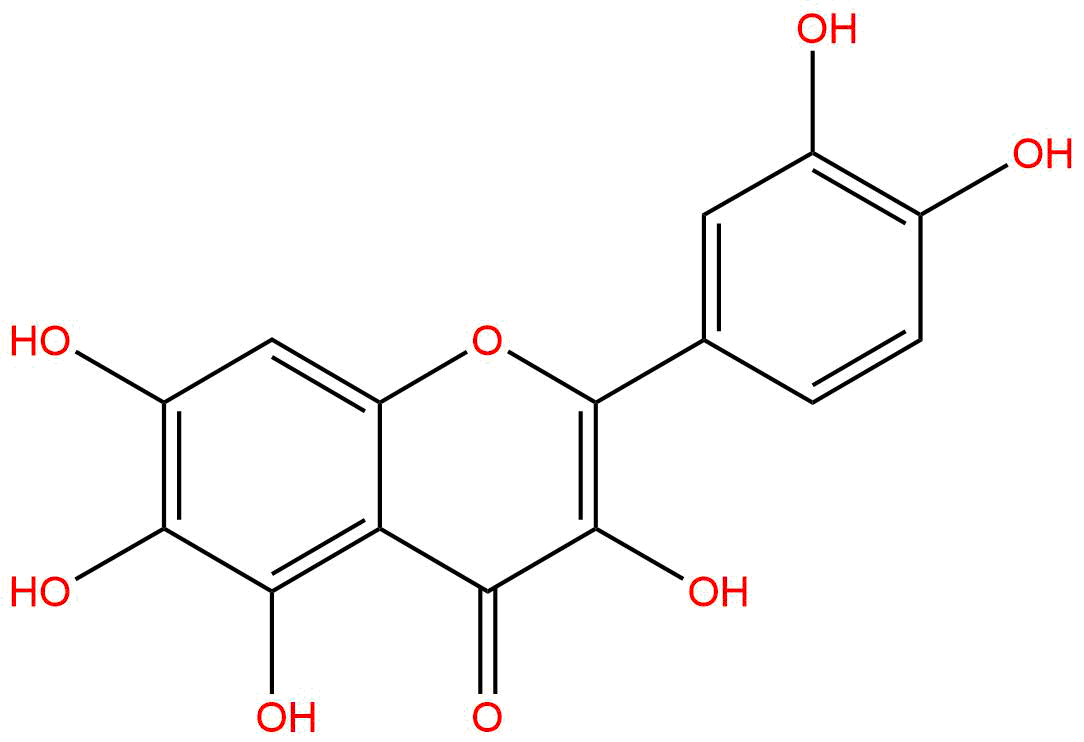
QuercetagetinCAS No.:90-18-6
|
||||||||||
 |
|
|
||||||||

| Catalogue No.: | BP4114 |
| Formula: | C15H10O8 |
| Mol Weight: | 318.237 |
Product name: Quercetagetin
Synonym name: 3,3',4',5,6,7-Hexahydroxyflavone; 3,5,6,7,3',4'-Hexahydroxyflavone; 6-Hydroxyquercetin
Catalogue No.: BP4114
Cas No.: 90-18-6
Formula: C15H10O8
Mol Weight: 318.237
Botanical Source: Tagetes erecta L
Physical Description:
Type of Compound: Flavonoids
Purity: 95%~99%
Analysis Method: HPLC-DAD or/and HPLC-ELSD
Identification Method: Mass, NMR
Packing: Brown vial or HDPE plastic bottle
Storage: Store in a well closed container, protected from air and light. Put into refrigerate or freeze for long term storage.
Whenever possible, you should prepare and use solutions on the same day. However, if you need to make up stock solutions in advance, we recommend that you store the solution as aliquots in tightly sealed vials at -20℃. Generally, these will be useable for up to two weeks.
The product could be supplied from milligrams to grams
Inquire for bulk scale.
For Reference Standard and R&D, Not for Human Use Directly.
Description:
Quercetagetin may be a potent inhibitor of the STAT1 signal, which could be a new molecular target for anti-inflammatory treatment, and may thus have therapeutic applications as an immune modulator in inflammatory diseases such as AD. It has stronger inhibitory effects on the protein and mRNA expression of TARC and MDC than other flavonoids.
References:
Biomolecules and Therapeutics, 2013, 21(2):138-145.
Anti-Inflammatory Effect of Quercetagetin, an Active Component of Immature Citrus unshiu, in HaCaT Human Keratinocytes.
Citrus fruit contain various flavonoids that have multiple biological activities. However, the content of these flavonoids are changed during maturation and immature Citrus is known to contain larger amounts than mature. Chemokines are significant mediators for cell migration, while thymus and activation-regulated chemokine (TARC/CCL17) and macrophage-derived chemokine (MDC/CCL22) are well known as the typical inflammatory chemokines in atopic dermatitis (AD), a pruritic and chronic inflammatory skin disease. We reported recently that the EtOH extract of immature Citrus unshiu inhibits TARC and MDC production.
METHODS AND RESULTS:
Therefore, we investigated the activity of flavonoids contained in immature Citrus on TARC and MDC levels. As a result, among the various flavonoids, Quercetagetin has stronger inhibitory effects on the protein and mRNA expression of TARC and MDC than other flavonoids. Quercetagetin particularly has better activity on TARC and MDC level than quercetin. In HPLC analysis, the standard peak of Quercetagetin matches the peaks of extract of immature C. unshiu.
CONCLUSIONS:
This suggests that Quercetagetin is an anti-inflammatory component in immature C. unshiu.